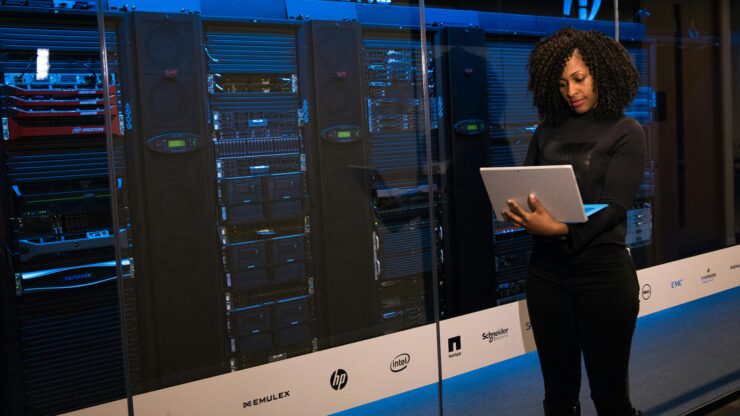Artificial Intelligence (AI) has advanced from a science fiction notion to the drivers of today’s innovation at a very fast pace. With its growing capabilities comes the demand for sophisticated AI infrastructure — the digital roads which fuel everything from ChatGPT to autonomous vehicles. In 2025, the United States has made a groundbreaking move by heavily investing in AI infrastructure in the Middle East, specifically Saudi Arabia and the UAE .This isn’t only about technology — it’s about international influence, national security, and a global competition to drive the next industrial revolution.
Why Is the U.S. Spent on AI Infrastructure Outside the Country?
strategic Diplomacy & Tech Superiority
The U.S. is pushing back against Chinese tech growth in the Middle East. By assisting in the construction of high-performance computing (HPC) facilities, America is fortifying alliances and building geopolitical leverage.
Hosting the Next-Gen AI Factories
In order to train influential AI models such as GPT-4 or Gemini, you require huge GPU clusters, fast internet, and clean energy. The U.S. views the Gulf states as prime candidates because of:
- Plenty of solar energy
- Government-supported tech programs (such as Saudi Vision 2030)
- Huge resources of money
How Will AI Infrastructure Transform the World?
- Speedier AI Innovation
AI models will develop 10 times quicker with global, distributed computing at their beck and call. - Decentralized AI Development
Overseas infrastructure localizes AI solutions — from Arabic-language models to local health diagnostics. - Economic Growth & Employment
There will be thousands of high-skilled jobs in cloud architecture, data center operations, and AI ethics. - Standardization of Global AI
With U.S.-led models hosted outside of the U.S., global AI safety and regulation standards will standardize more easily. When Will It Be Built?
The initial batch of AI data centers in Saudi Arabia and UAE is supposed to break ground in late 2025, with operational deployment by mid-to-late 2026. Certain pilot infrastructure is already being piloted under the U.S. Department of Commerce and regional Gulf partnerships.
What Significant Changes Can We Expect?
- Emergence of AI Hubs in the Middle East
- Improved AI collaborations across borders
3.Declined latency for AI services worldwide - Enhanced security measures for sensitive AI information
- Competition between Chinese and U.S.-sponsored infrastructure
FAQs
Q. 1 What is AI Infrastructure?
AI Infrastructure is the set of hardware, software, cloud services, and data pipelines needed to create, train, and deploy artificial intelligence models.
Q. 2 Why is the U.S. targeting Saudi Arabia and the UAE?
Due to low-cost solar energy, cooperative governments, and strategic diplomatic concern to curb China’s tech hegemony in the Middle East.
Q. 3 Will this affect AI development in India?
Yes. With AI infrastructure increasingly globally distributed, Indian startups and researchers can take advantage of less expensive, quicker access to high-capacity AI tools and hosting.
Q. 4 Is this a secure move?
Yes, with American participation, national security controls and transparency procedures are being put in place more than with other AI infrastructure agreements, particularly with state-owned Chinese entities.
Powered by Gadgetnewz.com – Your Source for Everything Tech.


